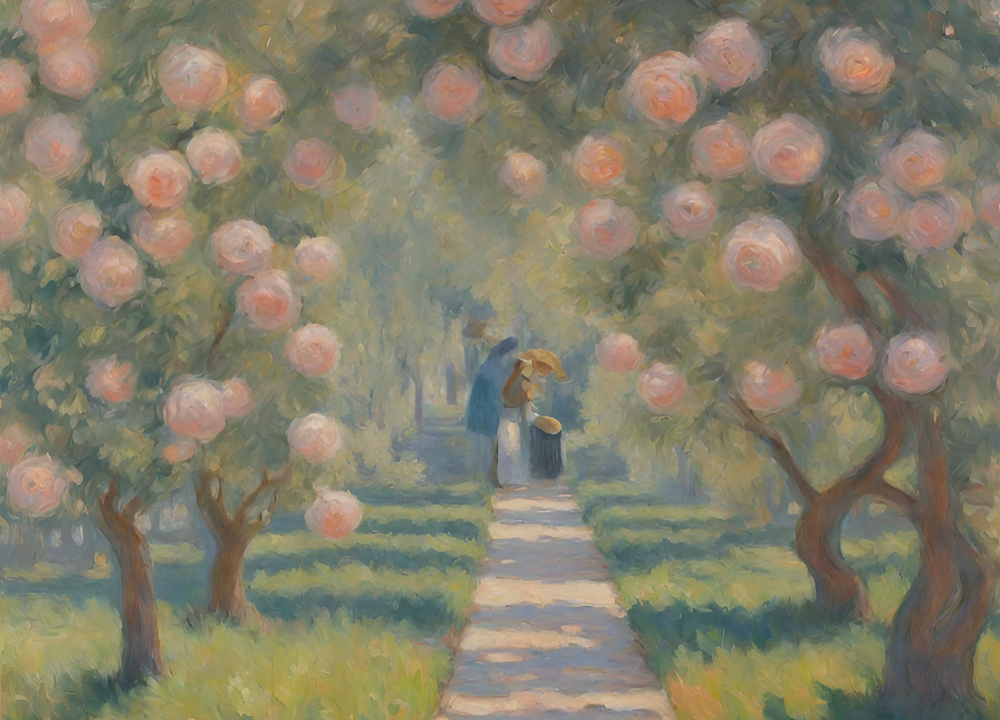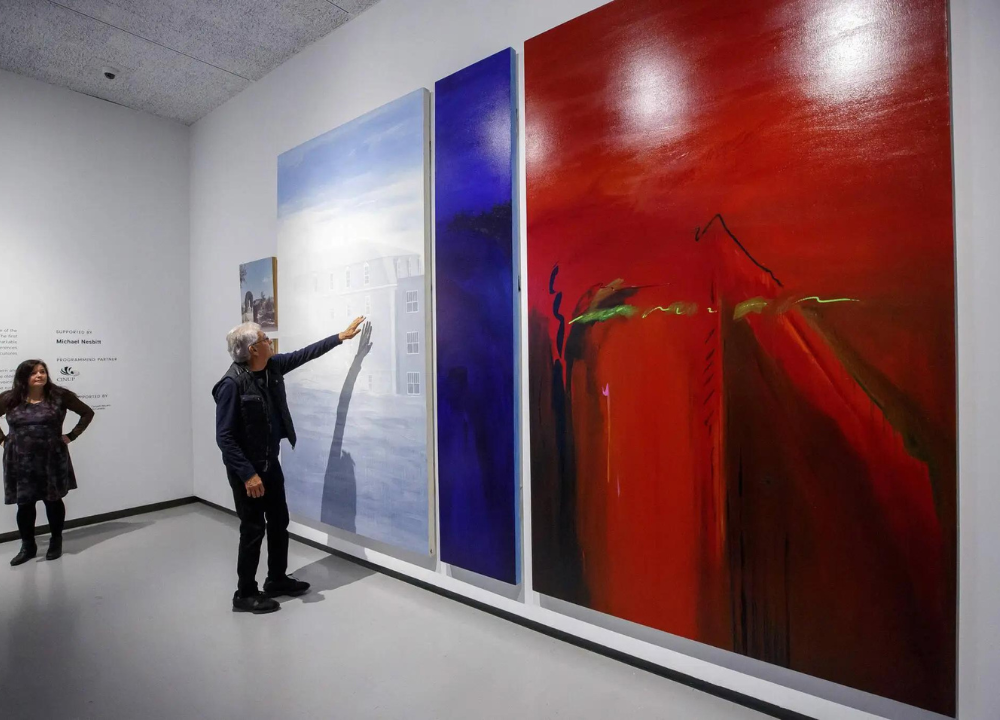Art has the power to move us, to tell stories, and to capture moments in time. Watercolor painting, with its delicate hues and fluid techniques, has a special place in this world.
Have you ever wondered who the pioneers of this medium are? In “Brushstrokes in Time: 5 Famous Watercolor Artists Who Changed Art,” you’ll discover the incredible lives and works of artists who transformed watercolor into a compelling form of expression.
These visionaries broke boundaries and challenged traditional methods, leaving a lasting impact on the art community. As you explore their stories, you’ll not only gain insight into their techniques but also understand how their contributions shaped the art we appreciate today. Get ready to be inspired and perhaps even ignite your own creativity. Let’s dive into the vibrant world of watercolor artistry and meet the masters who changed it forever.
Introduction: The Enduring Power Of Watercolor
Watercolor painting has a unique charm. It blends color and light effortlessly. Artists have used this medium for centuries. Their work shows the beauty and power of watercolor. This blog explores five famous watercolor artists. Each one changed the art world in significant ways. Their techniques and styles continue to inspire many today.
Beyond Simple Washes
Watercolor is often seen as simple. Many think it only involves basic washes. Yet, true mastery lies in its depth. The best watercolor artists explore layers, textures, and techniques. They create complex effects that mesmerize viewers. Here are some methods that elevate watercolor art:
- Wet-on-wet technique: Applying wet paint onto wet paper. This creates soft edges and blends colors beautifully.
- Dry brush technique: Using a dry brush on dry paper. This adds texture and detail.
- Glazing: Layering transparent washes to build depth. This enhances colors and adds richness.
- Salt technique: Sprinkling salt on wet paint. It creates interesting textures as it dries.
These techniques show that watercolor is more than a basic skill. Artists like John Singer Sargent and Winslow Homer mastered these methods. Their works are rich in emotion and detail.
Here’s a simple comparison of these methods:
| Technique | Description | Effect |
|---|---|---|
| Wet-on-wet | Wet paint on wet paper | Soft edges, color blending |
| Dry brush | Dry brush on dry paper | Texture and detail |
| Glazing | Layering transparent washes | Enhanced depth and richness |
| Salt technique | Sprinkling salt on wet paint | Unique textures |
Why These Artists Matter
Famous watercolor artists have a lasting impact. Their innovative techniques changed how people view art. They broke away from traditional styles. They embraced creativity and self-expression.
Here are some reasons why these artists matter:
- Influence: Their styles inspire countless artists today.
- Innovation: They introduced new techniques and ideas.
- Accessibility: Watercolor is easy to use, making art more accessible.
- Emotion: Their work conveys deep feelings and stories.
These artists paved the way for modern watercolor painting. Their legacy lives on in galleries and homes worldwide. Understanding their contributions helps us appreciate the art form more. It shows the beauty of creativity and expression.
1. J.m.w. Turner (1775 – 1851): The Master Of Light And Atmosphere
Watercolor artists have a unique ability to capture the essence of nature with delicate brushstrokes. Among them, J.M.W. Turner stands out as a pivotal figure. Born in 1775, he transformed the way artists viewed light and atmosphere. His work exemplifies how watercolors can evoke emotion and mood, making him a key player in the art world.
Revolutionary Atmospheric Effects
Turner is often celebrated for his breathtaking treatment of light and atmosphere. He mastered the ability to depict the changing qualities of light in his paintings. His work shows how light can transform a scene. Here are some aspects of his revolutionary approach:
- Use of Color: Turner often used vibrant colors to create dynamic contrasts.
- Layering Techniques: He built layers of washes to create depth and transparency.
- Weather Effects: His paintings often include fog, rain, and sunlight, adding drama.
One of his most famous works, “The Fighting Temeraire,” showcases his skill in depicting atmospheric effects. The ship’s silhouette against a luminous sunset captures the beauty of fading light. This painting is a prime example of how Turner used watercolors to convey emotion. His innovative style influenced many artists after him.
Innovative Techniques & Vision
Turner’s techniques set a new standard in watercolor painting. He experimented with different methods to push the boundaries of the medium. His vision for what watercolors could achieve was unmatched. Here are key techniques he employed:
- Wet-on-Wet Technique: This allowed colors to blend seamlessly on the paper.
- Dry Brush Technique: Used for fine details and textures, creating contrast.
- Use of White Space: He often left areas of the paper untouched to reflect light.
Turner’s approach changed how artists viewed watercolors. He encouraged artists to embrace spontaneity in their work. His influence can still be seen today. Many contemporary artists draw inspiration from his techniques. Through his innovative vision, Turner opened new paths for future generations.
2. Winslow Homer (1836 – 1910): America’s Realist In Watercolors
Winslow Homer stands out as a key figure in American watercolor art. His work reflects the beauty of American life and nature. He was born in 1836 and died in 1910. Homer’s watercolors capture emotions and stories. His unique style helped shape the art world. The following sections explore how he captured the essence of America and mastered the watercolor medium.
Capturing American Life & Nature
Winslow Homer excelled at showing the heart of America. He painted scenes from everyday life and the natural world. His watercolors often feature people in their environment. He highlighted the relationship between humans and nature. Homer’s subjects include:
- Fishermen working on the coast
- Children playing by the water
- Farmers tending to their fields
His paintings reflect the American spirit. They show strength, resilience, and a deep connection to nature. One of his famous works, “Breezing Up,” shows young boys sailing. It captures joy and freedom. Another well-known piece, “The Gulf Stream,” depicts a man at sea, fighting against the waves. This painting tells a story of struggle and survival.
Homer traveled extensively, gathering inspiration from various regions. His time in the Bahamas influenced his vibrant color palette. He painted the bright skies and clear waters, showcasing the beauty of tropical landscapes. His ability to convey emotion through landscape and figure remains unmatched.
Mastery Of The Medium
Winslow Homer was a true expert in watercolor techniques. He used the medium to create depth and texture. His skillful brushwork brought life to his paintings. He often worked quickly, capturing moments with spontaneity. This approach made his art feel immediate and alive.
Key techniques he used include:
- Wet-on-wet for soft blends
- Drybrush for sharp details
- Layering to build depth
Homer’s choice of paper and pigments also played a role. He preferred rough paper, which added texture. His colors were rich and vibrant, enhancing the emotional impact of his work. The following table shows some of his notable watercolor techniques:
| Technique | Description |
|---|---|
| Wet-on-Wet | Mixing colors on wet paper for soft edges |
| Drybrush | Using a dry brush for fine, sharp lines |
| Layering | Building color depth through multiple washes |
His mastery of watercolor inspired future generations. Artists continue to study his methods. Homer’s legacy lives on through his breathtaking works. He changed how people see American life and nature.
3. John Singer Sargent (1856 – 1925): The Dazzling Impressionist Of Light
Brushstrokes in Time explores the lives of five famous watercolor artists who transformed the art world. One of these artists is John Singer Sargent (1856 – 1925), known as the dazzling Impressionist of Light. His skillful use of watercolor made him a standout figure. Sargent’s paintings capture light in a way that feels alive. His work invites viewers into a world of color and emotion.
Capturing Light And Impression
John Singer Sargent was a master at capturing the essence of light. He painted scenes filled with life, reflecting the moment’s mood. His technique combined traditional methods with innovative approaches. This made his work unique and engaging. Sargent’s use of watercolor allowed him to create soft edges and vibrant colors.
Key aspects of Sargent’s style include:
- Fluid Brushwork: Sargent’s brushstrokes were loose and free, giving movement to his paintings.
- Brilliant Color Palette: He used bright colors that danced across the canvas.
- Play of Light: Sargent expertly showcased how light interacts with different surfaces.
- Emotion and Atmosphere: His works evoke feelings, drawing viewers into the scene.
Here is a table that highlights some of Sargent’s famous works and their characteristics:
| Artwork | Year | Style | Notable Features |
|---|---|---|---|
| Madame X | 1884 | Portrait | Bold colors, dramatic lighting |
| Carnation, Lily, Lily, Rose | 1885-1886 | Landscape | Soft light, vibrant flowers |
| In the Luxembourg Gardens | 1885 | Impressionist | Natural light, lively figures |
Sargent’s ability to capture light influenced many artists. His work continues to inspire. The beauty of his watercolors lies in their ability to convey emotion through light.
4. Georgia O’keeffe (1887 – 1986): Pioneer Of American Modernism
Georgia O’Keeffe was a major figure in American art. She is known as a pioneer of modernism. Her unique style changed how people view watercolor art. O’Keeffe’s works are famous for their bold colors and striking forms. She focused on flowers, landscapes, and bones, creating a deep connection with nature. Her influence is still felt today, making her an essential part of art history.
Early Abstraction And Expression
Georgia O’Keeffe’s journey into abstraction began in the early 20th century. She was influenced by various movements. Her art expressed emotions and ideas through simple forms and colors. O’Keeffe often used watercolor to explore these themes.
- Nature as Inspiration: O’Keeffe found beauty in everyday objects. She often painted flowers, which revealed their inner structures.
- Use of Color: Her bold color choices brought life to her paintings. She used vibrant hues to evoke feelings.
- Geometric Shapes: O’Keeffe embraced shapes in her work. Circles and lines became symbols of her artistic expression.
Her famous works include:
| Artwork | Year | Significance |
|---|---|---|
| Black Iris III | 1926 | Symbol of feminine power |
| Sky Above Clouds IV | 1965 | Representation of vastness |
| Red Canna | 1924 | Celebration of nature |
O’Keeffe’s work challenged traditional views of art. She brought a fresh perspective to watercolor. Her art encouraged others to see beauty in simplicity. This approach opened new doors for future artists.
5. Paul Cézanne (1839 – 1906): The Structural Visionary
Paul Cézanne is known as a key figure in the world of art. His unique style changed how people see color and shape. Born in 1839, Cézanne pushed the limits of traditional watercolor techniques. He is often called “The Structural Visionary” for his innovative approach. His work laid the groundwork for modern art and inspired many artists.
Building Form With Color
Cézanne believed that color could create form. He used bold brushstrokes to build depth and structure in his paintings. This was different from the soft, blended colors typical in watercolor art at the time. Cézanne’s technique helped viewers see shapes and objects more clearly. He often focused on still lifes, landscapes, and portraits.
Key elements of Cézanne’s work include:
- Layering Colors: He applied multiple layers of color. This added richness and complexity.
- Geometric Shapes: Cézanne broke down objects into basic shapes. He used spheres, cones, and cylinders.
- Perspective: He played with perspective to create a sense of depth. This made his paintings feel three-dimensional.
In his still lifes, Cézanne often arranged fruits and objects in a way that emphasized form. Below is a table showing some of his famous works and their notable features:
| Artwork | Year | Notable Features |
|---|---|---|
| The Basket of Apples | 1893 | Use of color and perspective |
| Mont Sainte-Victoire | 1904-1906 | Geometric shapes and depth |
| Still Life with Compote and Apples | 1893 | Layering and structure |
Cézanne’s impact on watercolor art remains profound. His vision transformed traditional techniques. Artists continue to study his methods today. His work encourages a new way of seeing and creating art.




